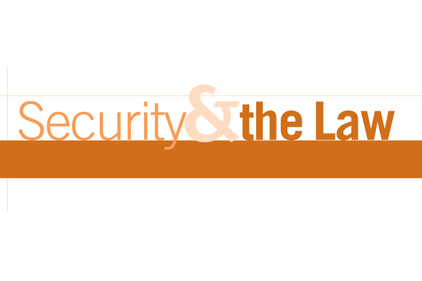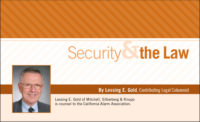An interesting case arose recently in the state of California regarding the definition of a “pursuit.” In the case, a motorcyclist collided into the driver side door of the deputy’s patrol car when the deputy opened it to exit the car to make contact with the motorist he had stopped for a traffic violation. The motorcyclist filed a lawsuit against the deputy sheriff relying on §22517 of the Vehicle Code that provides, “No person shall open the door of a vehicle on the side available to moving traffic unless it is reasonably safe to do so and can be done without interfering with the movement of such traffic, nor shall any person leave a door open on the side of a vehicle available to moving traffic for a period of time longer than necessary to load or unload passengers.”
The sheriff’s deputy moved for summary judgment based on the theory that he was immune from liability based on Vehicle Code §17004.
Section 17004 provided immunity for a public employee who caused injury while operating an authorized emergency vehicle “when in the immediate pursuit of an actual or suspected violator of the law.” The court pointed out that none of the cases expressly decided the scope of the word “pursuit” nor did any of them consider whether an officer can be in pursuit while opening the door of a stationary vehicle. In the context of a routine traffic stop, a peace officer wants to attain contact with the motorist for the purpose of investigating, issuing a citation or, if appropriate, apprehending the suspect. That goal cannot be achieved unless a peace officer opens the vehicle door and gets out. Accordingly, getting out of the vehicle was part of the police officer’s pursuit in the broad sense. In the moral sense, however, the court pointed out that the hunt, chase and search were over once the motorist pulled over and signaled a preliminary intent to submit to police authority.
The court pointed out that the immunity provided in §17004 applied to damage or injury “resulting from the operation, in the line of duty, of an authorized emergency vehicle while responding to an emergency call.” With respect to an immediate pursuit situation, the application of §17004 was not limited to emergencies and did not by its terms require the immediate pursuit to involve an actual “emergency” situation, as opposed to a more “routine traffic stop” to issue a citation. Because §17004 applied to a routine traffic stop and because a routine traffic stop did not involve a car chase, it could not be said that a car chase was synonymous with “pursuit” in §17004.
The plaintiff contended that because the sheriff had pulled the suspected violator over to the side of the road, the illegal activity had ceased and the circumstances did not present any sort of enhanced risk to the sheriff or the public.
The court rejected the assumption that there was no enhanced risk, stating that “any traffic stop is risky because the driver and circumstances are unknown.” The court held that the operation of an emergency vehicle while in pursuit of a violator or suspected violator of the law included the act of an officer opening his or her car door during a traffic stop as a precursor to getting out and confronting the motorist. The court upheld the summary judgment that was issued by the lower court.
READERS ASK
Q: I have recently read a great deal about the law case in Georgia regarding the judgment against Monitronics. My understanding is that the court invalidated the limitation of liability clause that was in the contract. Does this mean we can no longer rely on the limitation of liability provision that you have included in our contract?
A: I believe the limitation of liability clause, if properly drafted, will still be enforced in every state. In the lawsuit in Georgia, the lower court found that the limitation of liability provision was unconscionable and unenforceable. On appeal, the Appellate Court did not necessarily say it was unconscionable, but it was unenforceable because it was not prominently set out in the contract. There may be other reasons why the clause was not enforced, but notwithstanding whether or not this was a proper decision, it is important to prominently display the limitation of liability provisions or other provisions in the contract which in effect limit the liability of the company. We have always suggested to our clients that somewhere right above the signature line you also prominently display the language, “PARAGRAPH X LIMITS OUR LIABILITY – READ IT.” Bottom line, when properly set out, and properly defended, we believe the limitation of liability provision will be enforceable in each state.
To ask Les Gold a question, e-mail sdm@bnpmedia.com.



